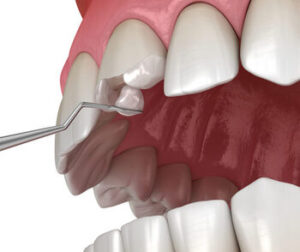If you’re dreaming of a whiter, straighter, or more symmetrical smile without breaking the bank, composite bonding might be just what you’re looking for. This minimally invasive and highly effective cosmetic dental procedure has become increasingly popular among Australians who want a natural-looking result without the hefty price tag of porcelain veneers.
But how much does composite bonding really cost in Australia? And what should you know before booking an appointment?
In this guide, we’ll explain the composite bonding price in Australia, what affects the cost, and how it compares to other treatments like composite veneers and porcelain veneers. We’ll also cover the bonding procedure, what it involves, and why this treatment has become a go-to solution for so many cosmetic dental concerns.
Let’s Start with the Basics: What Exactly Is Composite Bonding?

Unlike porcelain veneers, which require lab work and multiple visits, composite bonding is usually done in just one visit, making it an efficient procedure for those who want quick results.
What Types of Cosmetic Issues Can Composite Bonding Fix?
One of the reasons composite bonding is so popular is its versatility. This cosmetic dental procedure can address a wide range of aesthetic concerns without extensive dental work or a major investment.
Here are some of the most common cosmetic issues that composite bonding can fix:
Chipped or broken teeth
If you’ve accidentally chipped a tooth or have minor fractures, composite bonding offers a quick and natural-looking repair. The tooth-coloured composite resin is carefully shaped to restore the original form of your tooth, blending in seamlessly with your natural teeth.
Gaps between teeth
Small gaps between teeth, especially in the front, can leave your smile looking uneven or unfinished. Composite bonding helps close these spaces by adding tooth-coloured material to the sides of the teeth, giving your smile a fuller, more balanced appearance.
Discoloured or stained teeth
Bonding can be a great alternative for stains that do not respond well to professional teeth whitening. It allows your cosmetic dentist to cover discoloured areas with a smooth layer of tooth-coloured resin, instantly improving your smile.
Misshapen or uneven teeth
Some people are born with teeth that are naturally uneven in length or shape. Composite bonding can gently reshape the teeth and create a more balanced smile, enhancing both form and function.
Worn-down teeth
Grinding your teeth (bruxism) or general wear and tear can shorten or flatten teeth. Composite bonding can rebuild the original shape using composite resin material, helping restore a more youthful and proportionate appearance.
Minor misalignment
While it won’t replace orthodontic treatment for major alignment issues, bonding can improve the appearance of slightly misaligned teeth by reshaping and visually straightening them. It’s a popular option for patients who want a more uniform look without braces.
Whether you’re addressing one concern or multiple, composite bonding treatment is a flexible solution that works for a variety of cosmetic dental concerns, especially when done by a skilled dentist.
So, How Much Does Composite Bonding Cost in Australia?

Here’s what can influence the cost:
- Number of teeth involved (Are you fixing just one tooth or planning a complete smile makeover?)
- The extent of damage or reshaping required
- Whether the bonding is for minor touch-ups or a full composite veneer treatment
- The clinic’s experience, technology, and materials used
Composite Bonding vs Composite Veneers: Are They the Same?
Although the terms are often used interchangeably, there’s a slight difference between composite bonding and composite veneers.
- Composite bonding typically involves correcting minor imperfections like a chipped tooth, small gaps, or reshaping one or two teeth using a tooth-coloured composite resin.
- Composite veneers process involves applying a thin layer of composite material to the entire tooth’s surface to more comprehensively change its size, shape, or colour.
Think of composite bonding as a quick fix and direct composite veneers as a more involved cosmetic dental treatment that still uses tooth-coloured resin but offers more uniform coverage and a greater smile transformation.
What Happens During the Composite Bonding Procedure?
The composite bonding procedure is quite straightforward, and typically requires no drilling or anaesthesia unless there is tooth decay to be treated.
Here’s what to expect:
- Initial consultation: Your dentist will take a close look at your natural teeth, discuss what you’re hoping to achieve, and recommend the ideal treatment approach to match your goals.
- Tooth preparation: The surface of the tooth is gently roughened, and a special conditioning liquid is applied to improve the adhesion between the resin and the tooth.
- Application: The composite resin is sculpted onto the tooth, shaped, and adjusted to match your natural tooth structure.
- Curing: A special light is used to harden the resin material.
- Polishing: The bonded tooth is carefully polished to create a smooth, natural-looking finish that blends effortlessly with your surrounding teeth.
All of this can usually be completed within 30 to 60 minutes per tooth.
What Affects the Final Cost of Composite Bonding?
While the starting price is around $250 per tooth, the final composite bonding price in Australia can climb depending on:
1. How Many Teeth You’re Treating
Are you repairing a single chipped tooth or aiming for a complete smile transformation? The more teeth involved, the more time and material are required, naturally raising the bonding cost.
2. The Complexity of the Cosmetic Concerns
Some patients only need a quick fix for a broken tooth, while others may have discoloured teeth, uneven edges, or gaps that require more time-consuming sculpting and shaping.
3. Location and Clinic Expertise
Cosmetic dental services in major cities like Sydney, Melbourne, or Brisbane tend to cost more than in regional areas.
Composite Bonding vs Porcelain Veneers: Which Is Better for You?
When it comes to enhancing your smile, both composite bonding and porcelain veneers offer fantastic results. However, they serve slightly different needs, and the right choice often depends on your goals, budget, and timeline.
Composite bonding is typically more budget-friendly, with costs starting at approximately $250 per tooth. It’s completed in a single visit and involves minimal alteration to your natural tooth. The results are natural-looking and effective for correcting minor imperfections such as chips, gaps, or slight misalignments. Composite bonding is also mostly reversible, making it a great option for those who want a less permanent cosmetic change.
On the other hand, porcelain veneers are a longer-lasting and more refined option. They typically require at least two appointments, as the veneers are customised in a dental lab. Porcelain veneers cost more, but they offer a highly polished, glossy finish that beautifully mimics natural teeth. They are ideal for those seeking a dramatic smile makeover or dealing with more extensive cosmetic concerns.
If you’re after a cost-effective, efficient solution for minor corrections, composite bonding could be the perfect choice. But if you’re ready to invest in a more durable and aesthetically sophisticated outcome, porcelain veneers might be worth considering. Your dentist can guide you in evaluating the advantages and disadvantages based on your individual smile goals and needs.
Benefits of Composite Bonding for a Smile Makeover
There’s a reason so many Australians are turning to composite teeth enhancements for their cosmetic dental concerns. Here are the top benefits:
- Cost-effective alternative to dental veneers
- Completed in a single visit
- Requires little to no tooth enamel removal
- Looks like natural teeth
- Easily repairable if chipped or damaged
- Helps address various cosmetic concerns like spacing, cracks, and discolouration
How Long Does Composite Bonding Last?
The lifespan of composite bonding depends largely on how well you care for your teeth. With good oral hygiene and regular dental visits, your bonded teeth can last anywhere from 4 to 8 years.
Avoiding habits like nail-biting, chewing ice, or using your teeth to open packages can help extend the life of your composite resin veneers.
Can You Whiten Bonded Teeth?
This is an important consideration. Composite bonding does not respond to teeth whitening like natural teeth do. If you’re planning to whiten your smile, it’s best to do it before the composite bonding procedure. That way, the tooth-coloured composite resin can be matched to your brighter, whitened smile.
Is Composite Bonding Right for You?
You might be a good candidate for composite bonding if you:
- Have stained teeth that don’t respond well to whitening
- Want to fix a chipped tooth or broken teeth
- Need to close small gaps or reshape your natural tooth
- Are you looking for a quick and efficient procedure with visible results
However, those with major alignment issues, severe tooth decay, or bite problems may need orthodontic treatment or other restorative work before bonding.
Composite Bonding Maintenance Tips

- Brush and floss daily to maintain healthy natural teeth and gums
- Use non-abrasive toothpaste to protect the bonded area
- Make sure to visit your dentist every six months for routine checkups and professional cleans to keep your bonded teeth in top condition.
- Avoid coffee, red wine, and smoking to minimise staining
- If you tend to grind your teeth while sleeping, wearing a custom mouthguard can help protect your bonded teeth from damage and prolong their lifespan.
Are There Any Risks or Side Effects?
Composite bonding is considered very safe when done by an experienced cosmetic dentist. Some patients may experience temporary sensitivity or rough edges, but these issues can usually be addressed with minor adjustments.
FAQs
Can composite bonding fix crooked or misaligned teeth?
Yes, minor misalignment can be improved with bonding. However, more significant issues may require orthodontic treatment like Invisalign or braces.
Is composite bonding reversible?
Yes, since it involves minimal alteration to the natural tooth.
Does bonding damage your teeth?
No, it’s non-invasive and doesn’t harm the tooth structure.
Can you get bonding for multiple teeth at once?
Absolutely. Many people opt for a complete smile transformation with bonding on several teeth.
How long does the composite bonding procedure take?
In most cases, composite bonding is completed in just one visit, with each tooth taking approximately 30 to 60 minutes.
How long does composite bonding last?
With good oral hygiene and care, composite bonding can last between 4 to 8 years before needing touch-ups or replacement.
Final Thoughts: Is Composite Bonding Worth It?
If you want a quick, affordable, and natural-looking way to improve your smile, composite bonding in Australia is absolutely worth considering. It’s perfect for those with chipped teeth, discoloured teeth, or anyone simply looking to refresh their smile without the commitment or cost of porcelain veneers.
With a starting cost of $250 per tooth, it’s one of the most budget-friendly cosmetic dental procedures available today. When carried out by an experienced dentist, the results can look incredibly natural and leave you with a beautifully enhanced smile.
If you’re ready to enhance your smile with composite bonding treatment, book a consultation with Dental 266 at 02 9051 0600. They’ll walk you through your options, costs, and what to expect during your composite bonding procedure.
Let your natural teeth shine brighter and more confidently with this simple yet powerful treatment.
References
- Verywell Health. (n.d.). How is professional in-office teeth whitening done? Retrieved from https://www.verywellhealth.com/how-is-professional-in-office-teeth-whitening-done-1059032
- Mayo Clinic. (n.d.). Bruxism (teeth grinding). Retrieved from https://www.mayoclinic.org/diseases-conditions/bruxism/symptoms-causes/syc-20356095
- Haywood, V. B. (2000). History, safety, and effectiveness of current bleaching techniques and applications of the nightguard vital bleaching technique. Quintessence International, 31(7), 486–496. Retrieved from https://pubmed.ncbi.nlm.nih.gov/10709338/
- Cleveland Clinic. (n.d.). Oral hygiene. Retrieved from https://my.clevelandclinic.org/health/treatments/16914-oral-hygiene






